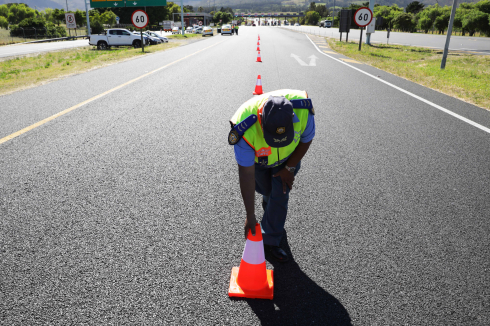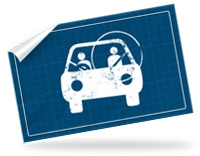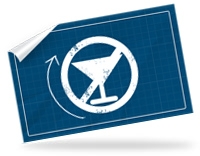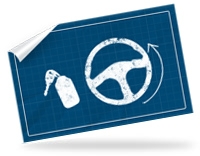Last week, 64 people were arrested by Western Cape Provincial Traffic officers on suspicion of driving under the influence of alcohol. During the same period, 15 pedestrians were killed in traffic crashes in our province.
News
Latest news, speeches, media alerts and publications.


Safety of Cyclists and Blue Lights Regulations Promulgated / 20 November 2013
On 20 November 2013, the Safety of Cyclists and Blue Lights Regulations will be published in the Provincial Gazette Extraordinary 7194 following periods of public comment and lengthy consideration. In December 2012, The Western Cape Provincial Road Traffic Administration Act (6 of 2012) was passed, and came into effect on the 1st of June 2013. The Act, in terms of section 8, gives the Minister the power to make regulations governing road safety matters, a critical weapon in the on-going battle against the carnage on the roads.
Section 8 (1) reads, “the Minister may make regulations, not inconsistent with this Act or the National Road Traffic Act, in respect of –
(b) any restrictions in respect of the use of lamps emitting a blue light or of sirens on vehicles operated by any person;
(c) the rights and duties of persons using pedal cycles on public roads and the duties of drivers of vehicles to ensure the safety of persons using pedal cycles…”
As per this Act, I published, for public comment, the draft Safety of Cyclist Regulations and draft Regulations on Restrictions on the Use of Lamps Emitting a Blue Light and Use of Sirens earlier this year. Today, these two key regulations will be promulgated into law.
Safety of Cyclists Regulations
The Safety of Cyclists regulations are aimed at ensuring the safety of cyclists and to create an environment in which non-motorised modes of transport are encouraged and made safer. The regulations focus on a reciprocal duty and relationship that must exist between cyclists (who are most vulnerable on our roads when overtaken by faster moving cars, trucks and buses) and motorists alike.
The regulations require a driver of a motor vehicle to:
- Exercise due care while passing the cyclist;
- Leave a distance between the motor vehicle and the cyclist of at least one meter; and
- Maintain that distance from the cyclist until safely clear of the cyclist
However, motorists may cross a solid barrier line to pass a cyclist provided that it can be done without obstructing or endangering other persons or vehicles; it is safe to do so; it can and is done for a period no longer than is necessary to pass the cyclist.
The regulations require a cyclist to:
- Make the appropriate use of pedal cycle lanes where these are available;
- Give conspicuous driving signals as contemplated in National Regulations;
- Keep as close as possible to the left edge of the roadway;
- Obey road traffic signs and rules;
- Fit and use effective front and rear lights when riding in hours of darkness and when visibility is limited;
- Not ride on the right-hand side of a motor-vehicle proceeding in the same direction, except when passing that motor vehicle or turning right at the intersection;
- Not ride abreast of another cyclist proceeding in the same direction, except when passing that cyclist;
- Not ride while wearing a headset, headphones or any listening device other than a hearing aid; or while carrying another person on the pedal cycle, unless the pedal cycle is specifically equipped to carry more than one person.
Following the example of several States in the USA, where they have adopted a 3 foot passing gap in their legislation (equivalent to just less than a meter), the regulations will require the driver of a motor vehicle to keep a passing gap of at least one meter. A larger dimension of 1.5 meters was initially considered. However it was clear from global practice that 1 meter was more appropriate. This was confirmed by very experienced traffic law officials and some comments received during the public comment period.
The Safety for Cyclist regulations will be deeming regulations that would encourage the appropriate spatial relationship between motorists and cyclists. The onus will be placed on any violator of this regulation, particularly when resulting in an injury or death, to show why they failed to adhere to the requirement. Failing which, the perpetrator could then be liable to a penalty for such non-compliance.
Failure of a driver or a cyclist to adhere to any provision of the regulations will be an offense and will be liable to a fine if found guilty.
The promulgation of these regulations marks the beginning of a more lawful and harmonious relationship between motorists and cyclists in the Western Cape.
Regulations on Restrictions on the Use of Lamps Emitting a Blue Light and Use of Sirens
Section 3 of the regulations states that, “a person may not operate or instruct any other person to operate –
a) A motor vehicle in which an office bearer is being transported; or
b) A motor vehicle escorting or accompanying a motor vehicle referred to in (a), on a public road while –
(i) An intermittently flashing blue light is being emitted from a lamp fitted to that motor vehicle; or
(ii) A siren fitted to that motor vehicle is being used,
unless there is an imminent identified threat regarding the safety or life of the office bearer, or there is a threat of damage to the property of the office bearer.
This regulation is in line with the National Road Traffic Act, enabling office bearers to make use of vehicles fitted with blue lights and sirens. We have seen the abuse of blue light brigades by office bearers in the past, tantamount to a disregard for the rule of law and a threat to the safety of other road users. As per the promulgated regulations, office bearers may not make use of blue lights or sirens on their vehicles or vehicles escorting them, unless the situation is one that constitutes a case of emergency.
More News Posts:
-
-
On Saturday, 23 March 2024, the Western Cape Government (WCG) officially launched our Easter road safety campaign for 2024.
-
The Western Cape Government is offering FREE ten-point vehicle checks by qualified examiners from Saturday, 23 March to Thursday, 28 March at venues in Cape Town and Drakenstein.
-
It is with great sadness that I extend my condolences to the loved ones of the ten people – seven adults and three children – who died in a road crash on the N7 between Vanrhynsdorp and Klawer on Sunday 17 March 2024.






